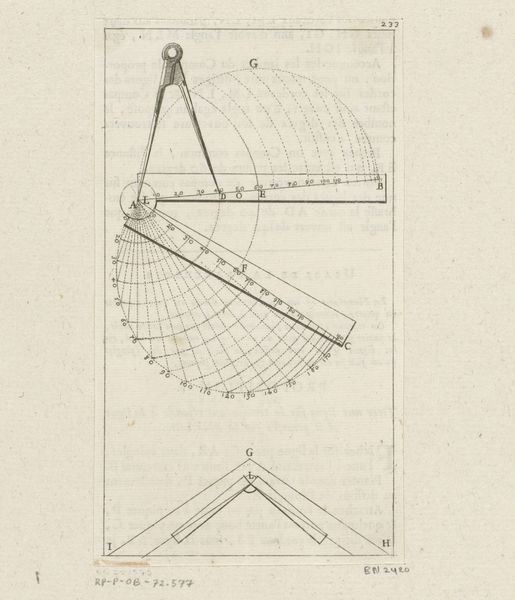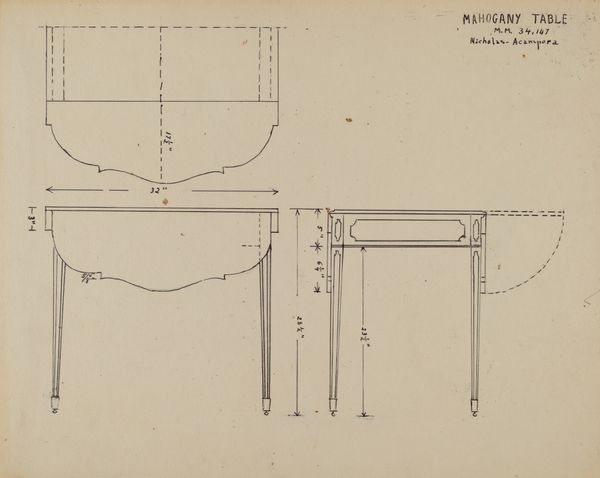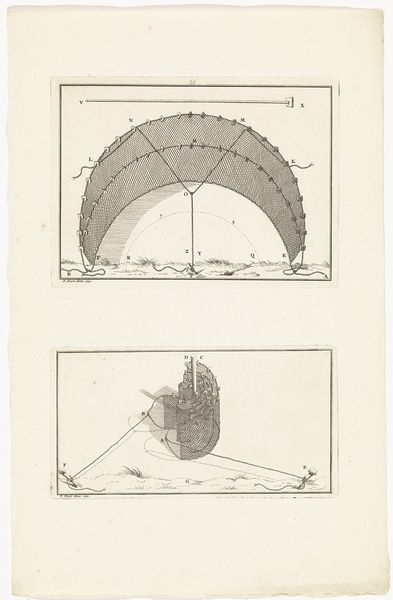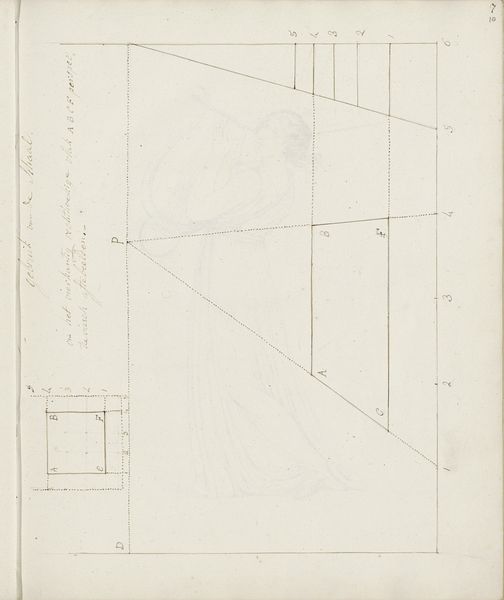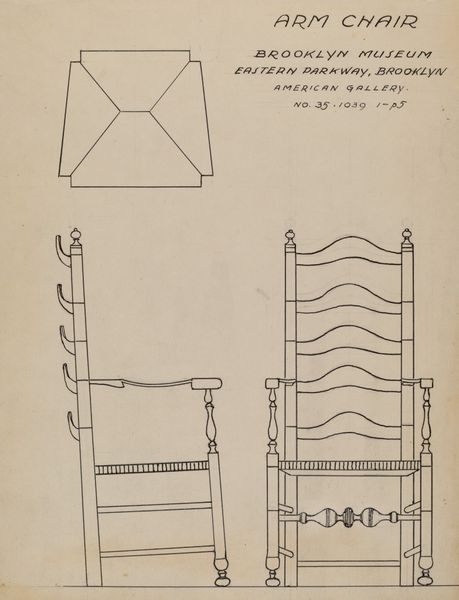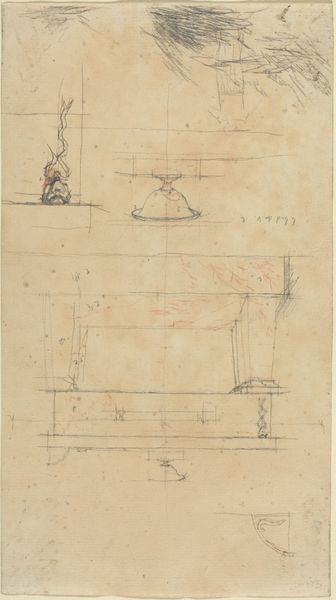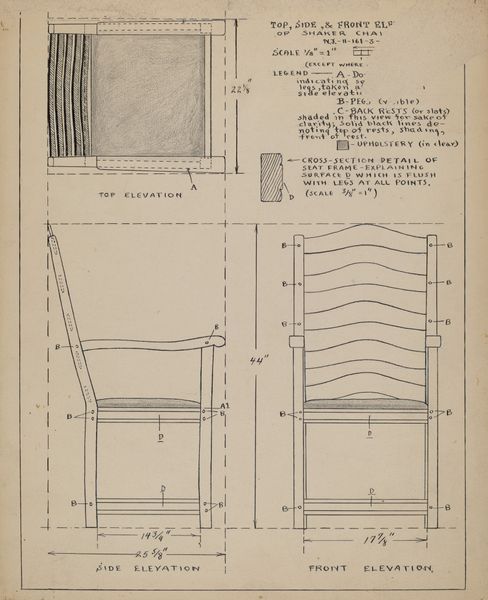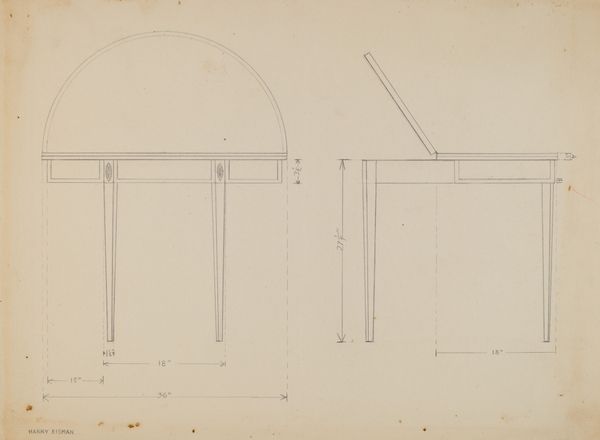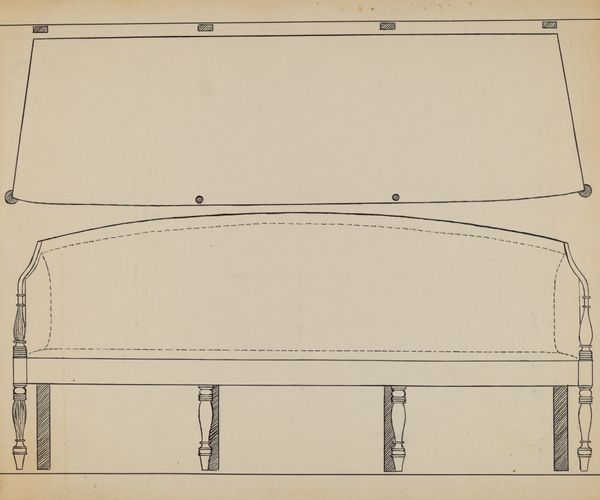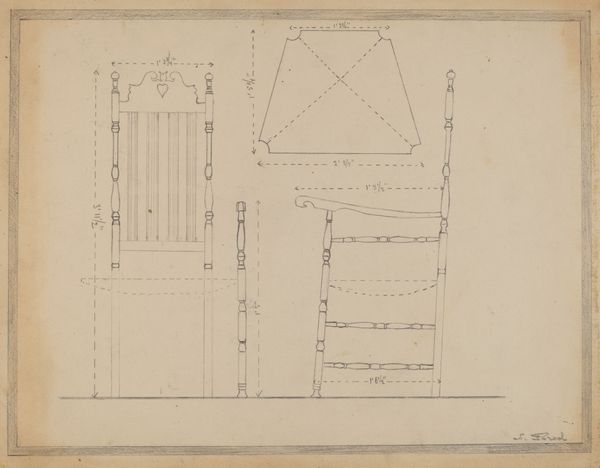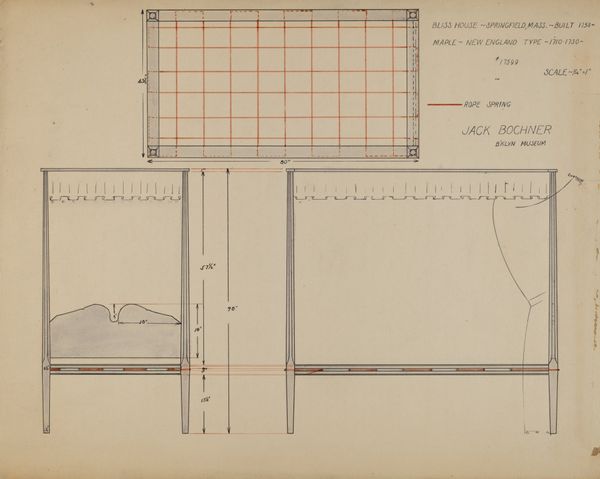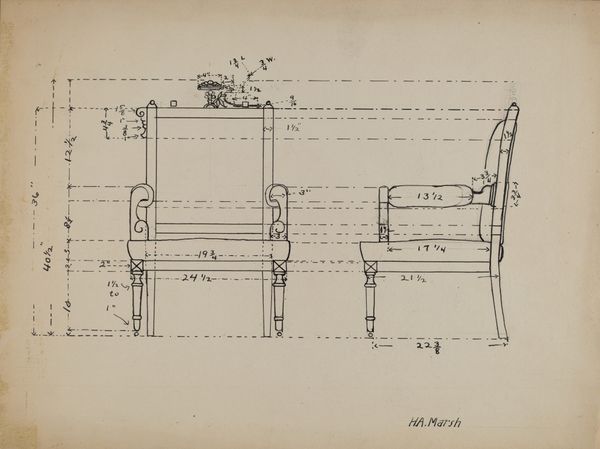
print, etching
#
baroque
# print
#
etching
#
etching
#
geometric
#
line
Dimensions: height 370 mm, width 310 mm, depth 55 mm
Copyright: Rijks Museum: Open Domain
Curator: This etching, titled "Briefwisseling van Hendrik van Limborch en Lambert ten Kate," created sometime between 1700 and 1714, is a captivating example of Baroque printmaking. I'm particularly interested in its geometric lines. Editor: It looks almost scientific, or like architectural blueprints. A little dry, perhaps, but precise in its own, quite peculiar way. I mean, is this a topographical rendering? What is being measured? Curator: Indeed, the etching employs a distinctly linear style. Consider the way that each carefully incised line works to map...well, that's the puzzle, isn't it? There are layers of symbolism at work; the labor is etched in meticulous detail that reflects the mathematical rigor favored in this period. Editor: Layers upon layers, absolutely! And those cross-sections have such depth and rhythm, it evokes that feeling I used to get poring over my Dad's design documents when he was a student; some secret project known only to him! But what project lies buried here, waiting to be rediscovered? Curator: It's fascinating to consider who made this etching and what their relationship to Hendrik van Limborch and Lambert ten Kate might have been. As a print, the nature of reproducibility and its function during their intellectual exchange adds yet another fascinating context layer, especially since intellectual work, scholarly communications, and craftsmanship converged during this Baroque time. Editor: That's a great point. So is it possible this wasn't seen as "art" but rather documentation or some form of exchange and data-gathering? The fine line-work is deceiving when trying to gauge its artistic intention; one feels caught between functionality and aesthetic purpose. What do we think its material lifespan could have been? Curator: I think further research may show exactly its social functions back then! Until then, by scrutinizing its form and craftsmanship and grasping at possible interpretations, we honor its material value while awaiting revelations. Editor: A detective story unfolds then, brick by brick—intriguing!
Comments
No comments
Be the first to comment and join the conversation on the ultimate creative platform.
